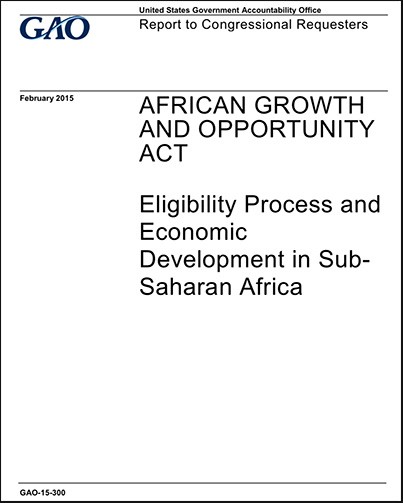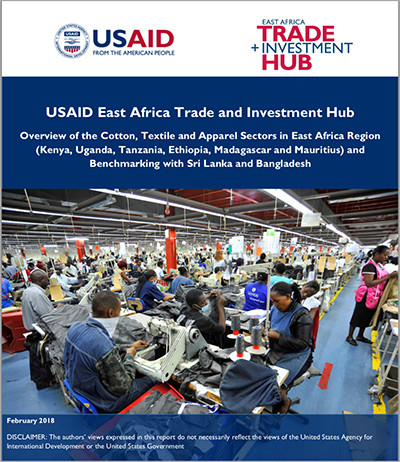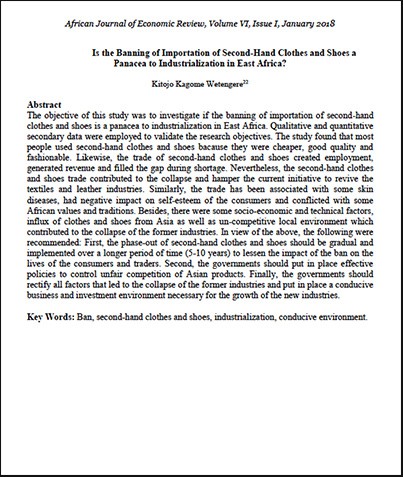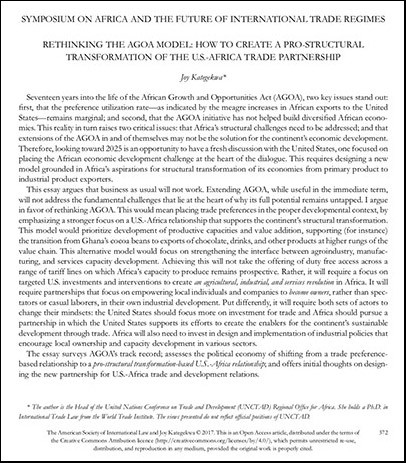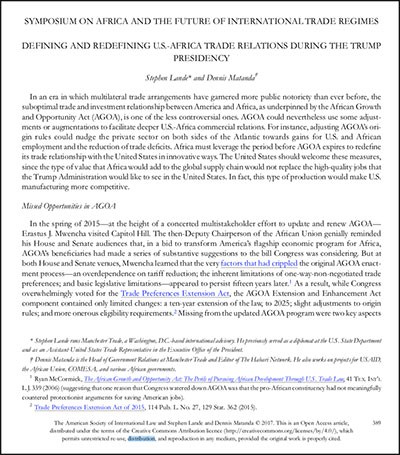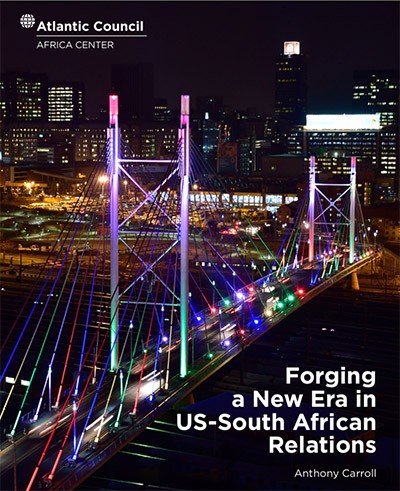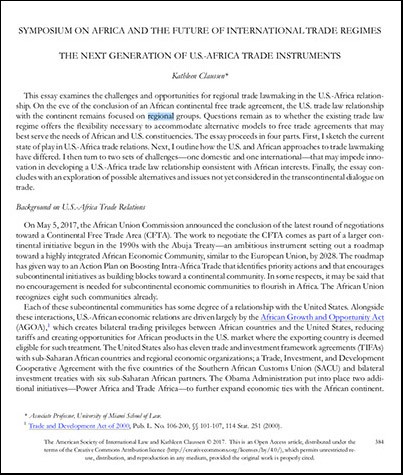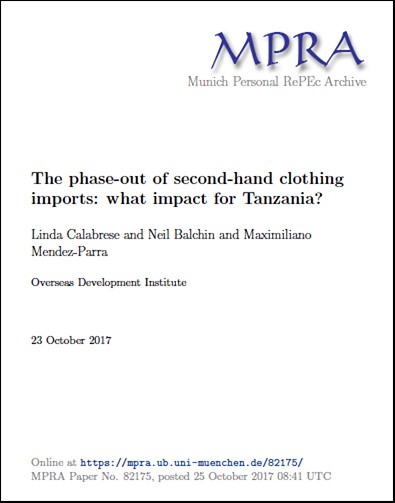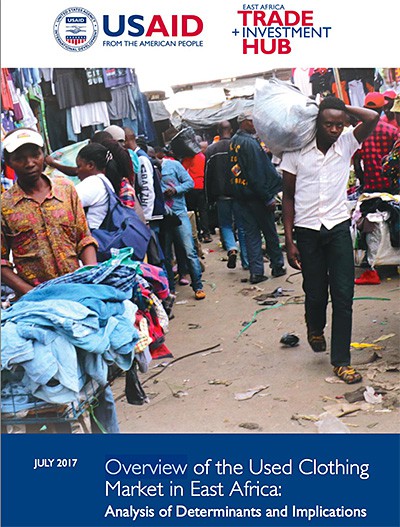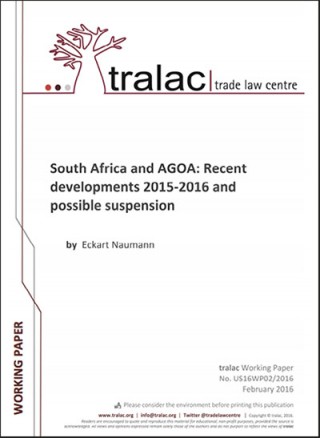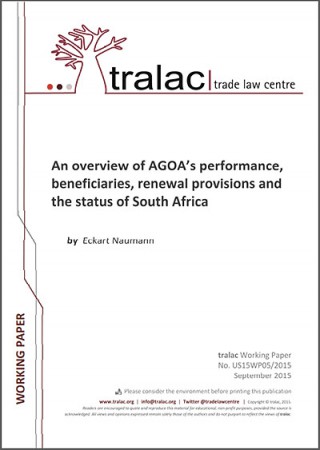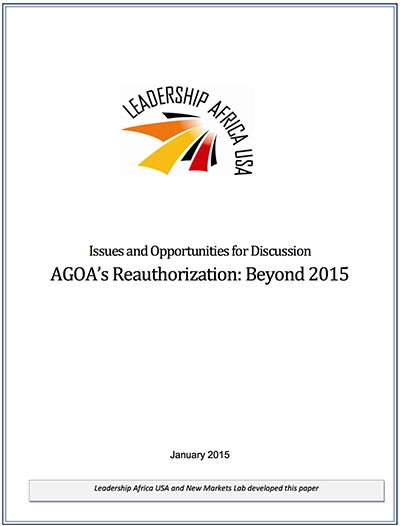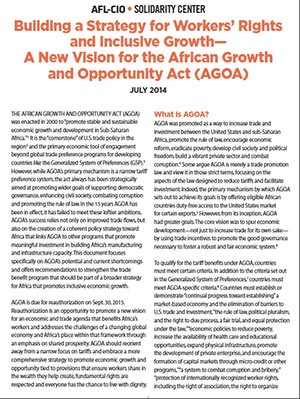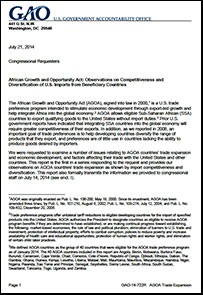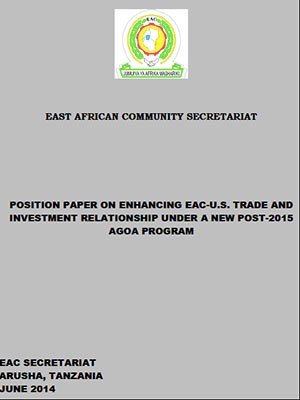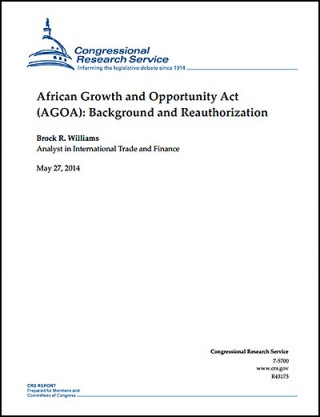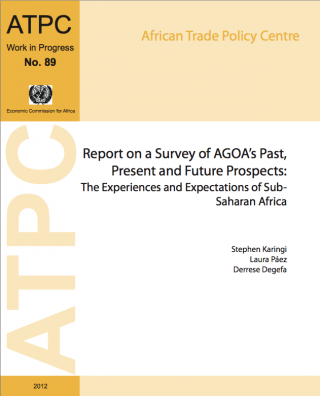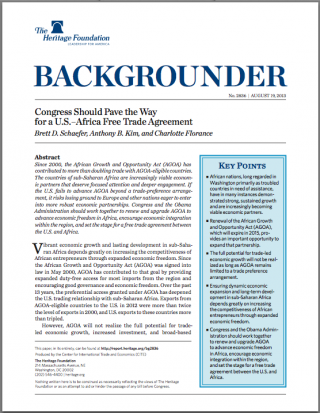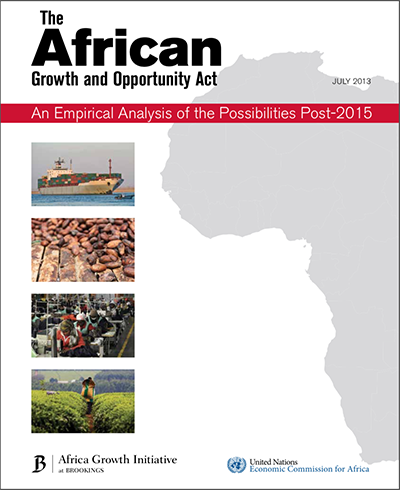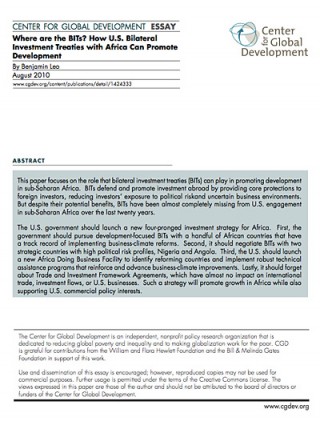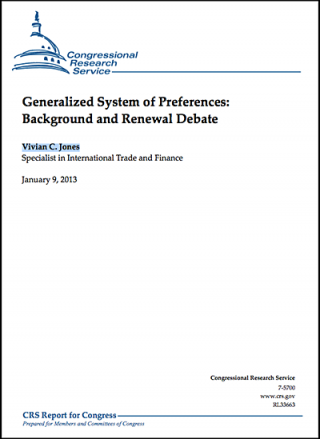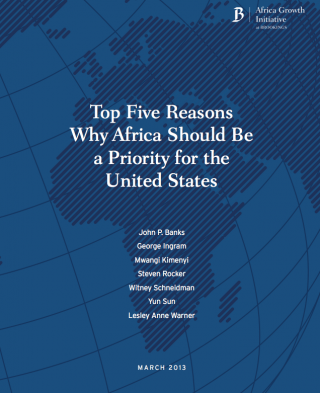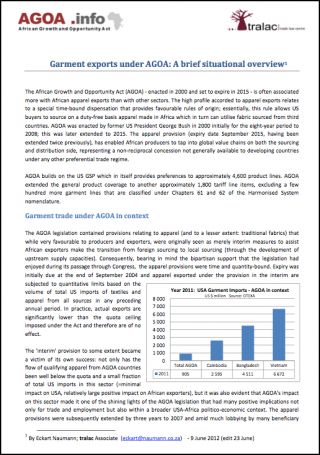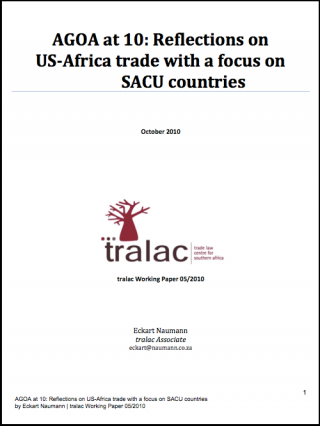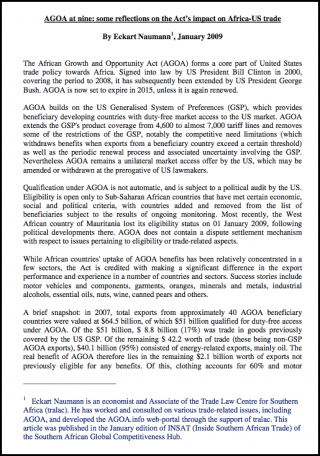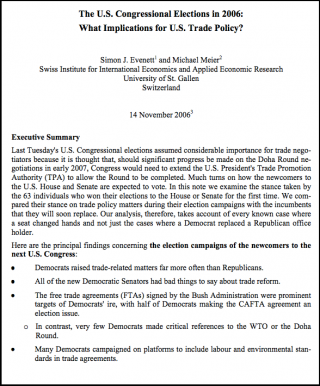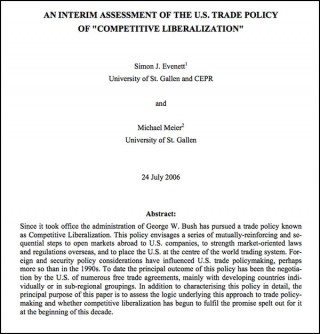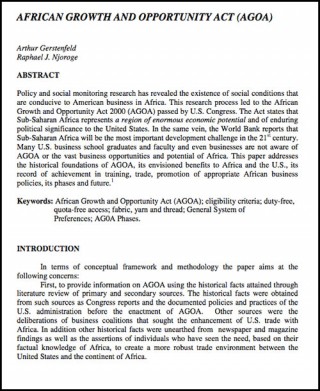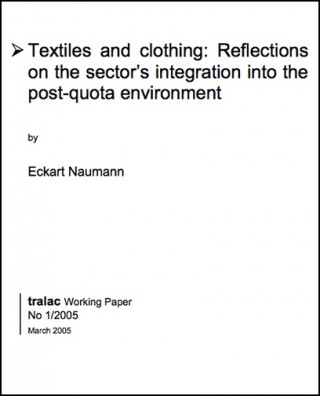Research Documents
Eligibility Process and Economic Development in Sub-Saharan Africa
The U.S. government uses the annual eligibility review process required by the African Growth and Opportunity Act (AGOA) to engage with sub-Saharan African countries on their progress toward economic, political, and development reform objectives reflected in AGOA's eligibility criteria. Managed by the Office of the United States Trade Representative, the review process brings together officials from U.S. agencies each year to discuss the progress each country is making with regard to AGOA's eligibility criteria and to reach consensus as to which countries should be deemed eligible to receive AGOA benefits. Over the lifetime of AGOA, 13 countries have lost AGOA eligibility, although 7 eventually had it restored (see figure). To encourage reforms, the U.S. government will engage with countries experiencing difficulty meeting eligibility criteria and may specify measures a country can take. For example, U.S. officials met with Swaziland officials over several years to discuss steps to improve labor rights. However, Swaziland did not make the necessary reforms and lost eligibility effective in January 2015.
Overview of the Cotton, Textile and Apparel Sectors in East Africa Region and Benchmarking with Sri Lanka and Bangladesh
Overview of the Cotton, Textile and Apparel Sectors in East Africa Region and Benchmarking with Sri Lanka and Bangladesh is a USAID Hub report that serves as a reference for businesses looking to source from East Africa. It provides easily searchable and mapped information on sector players that could be used to identify textile, apparel and apparel accessory producers who can supply products to local and regional clients and U.S. buyers. It also benchmarks the business climate for apparel-related trade and investment in six East African countries (Kenya, Uganda, Tanzania, Madagascar, Mauritius and Ethiopia) against two global apparel producing competitors in Asia – Sri Lanka and Bangladesh – to provide a basis for the selection of suitable sourcing and investment for local and global buyers as well as policy improvements and interventions by East African governments.
Is the banning of importation of second-hand clothes and shoes a panacea to industrialization in East Africa?
The objective of this study was to investigate if the banning of importation of second-hand clothes and shoes is a panacea to industrialization in East Africa. Qualitative and quantitative secondary data were employed to validate the research objectives. The study found that most people used second-hand clothes and shoes bacause they were cheaper, good quality and fashionable. Likewise, the trade of second-hand clothes and shoes created employment, generated revenue and filled the gap during shortage. Nevertheless, the second-hand clothes and shoes trade contributed to the collapse and hamper the current initiative to revive the textiles and leather industries. Similarly, the trade has been associated with some skin diseases, had negative impact on self-esteem of the consumers and conflicted with some African values and traditions. Besides, there were some socio-economic and technical factors, influx of clothes and shoes from Asia as well as un-competitive local environment which contributed to the collapse of the former industries. In view of the above, the following were recommended: First, the phase-out of second-hand clothes and shoes should be gradual and implemented over a longer period of time (5-10 years) to lessen the impact of the ban on the lives of the consumers and traders. Second, the governments should put in place effective policies to control unfair competition of Asian products....
Rethinking the AGOA model: How to create a pro-structural transformation of the US-AFRICA trade partnership
Seventeen years into the life of the African Growth and Opportunities Act (AGOA), two key issues stand out: first, that the preference utilization rate—as indicated by the meagre increases in African exports to the United States—remains marginal; and second, that the AGOA initiative has not helped build diversified African econo- mies. This reality in turn raises two critical issues: that Africa’s structural challenges need to be addressed; and that extensions of the AGOA in and of themselves may not be the solution for the continent’s economic development. Therefore, looking toward 2025 is an opportunity to have a fresh discussion with the United States, one focused on placing the African economic development challenge at the heart of the dialogue. This requires designing a new model grounded in Africa’s aspirations for structural transformation of its economies from primary product to industrial product exporters.
Defining and redefining US-AFRICA trade relations during the Trump Presidency
In an era in which multilateral trade arrangements have garnered more public notoriety than ever before, the suboptimal trade and investment relationship between America and Africa, as underpinned by the African Growth and Opportunity Act (AGOA), is one of the less controversial ones. AGOA could nevertheless use some adjustments or augmentations to facilitate deeper U.S.-Africa commercial relations. For instance, adjusting AGOA’s origin rules could nudge the private sector on both sides of the Atlantic towards gains for U.S. and African employment and the reduction of trade deficits. Africa must leverage the period before AGOA expires to redefine its trade relationship with the United States in innovative ways. The United States should welcome these measures, since the type of value that Africa would add to the global supply chain would not replace the high-quality jobs that the Trump Administration would like to see in the United States. In fact, this type of production would make U.S. manufacturing more competitive.
Forging a New Era in US-South African Relations
As one of the African continent’s largest and most sophisticated economies, South Africa offers a myriad of opportunities for engagement with the United States on diplomatic, commercial, security, and social fronts. It is a self-sufficient, complex, and dynamic country in a struggling, complex, and dynamic region. Yet, the centrality of South Africa to the United States’ relationship with the wider continent is underappreciated by Washington’s policy community, which has become distracted by the displays of dysfunctionality and high-level corruption that have come to characterize South African politics. These political dramatics have knocked US relations with South Africa off track by obscuring the enduring social inequities at the heart of South Africa’s problems, both in media depictions of South Africa and in serious policy discussions. As Anthony Carroll details in the Africa Center’s newest report, Forging a New Era in US-South African Relations, the United States has a significant stake in South Africa’s future. The country has the potential to serve as a peacekeeper and economic flagship for the whole of Africa. Currently, it falls far short of this potential—but the upside trade and security benefits of an improved relationship between Washington and Pretoria are significant. At the same time, the downside risks of ignoring the relationship are severe: increased social unrest in South Africa would have disastrous consequences...
The next generation of US-AFRICA trade instruments
This essay examines the challenges and opportunities for regional trade lawmaking in the U.S.-Africa relation- ship. On the eve of the conclusion of an African continental free trade agreement, the U.S. trade law relationship with the continent remains focused on regional groups. Questions remain as to whether the existing trade law regime offers the flexibility necessary to accommodate alternative models to free trade agreements that may best serve the needs of African and U.S. constituencies. The essay proceeds in four parts. First, I sketch the current state of play in U.S.-Africa trade relations. Next, I outline how the U.S. and African approaches to trade lawmaking have differed. I then turn to two sets of challenges—one domestic and one international—that may impede inno- vation in developing a U.S.-Africa trade law relationship consistent with African interests. Finally, the essay con- cludes with an exploration of possible alternatives and issues not yet considered in the transcontinental dialogue on trade.
The phase-out of second-hand clothing imports: what impact for Tanzania?
The East African Community has begun phasing-out imports of second-hand clothing to promote the development of the domestic garment sector. Using trade data and information obtained from the exporters, this study produces the first estimate of disaggregated imports of second-hand clothing in Tanzania. The net import of used clothing is estimated at over 540 million pieces per year, compared to a domestic production of new clothing of 20 million pieces and import of 177 million pieces of new clothing. This study assesses the short-term impact of the phase-out on the domestic garment sector. Depending on the substitutability between new and used clothing, the phase-out could prompt increased import of new clothing. It could also prompt employment losses and generate costs for the poorest consumers. In the longer term, the phase-out is unlikely to promote the development of the garment sector unless the existing constraints are properly addressed.
Overview of the Used Clothing Market in East Africa: Analysis of Determinants and Implications
Overview of the Used Clothing Market in East Africa: Analysis of Determinants and Implications. In March 2016, the East African Community (EAC) Heads of State issued a Joint Communiqué from the 17th Ordinary Summit, expressing their intent to progressively phase out importation of used clothing as a means to support the region’s textile and apparel industry.* A U.S. trade association reacted to these measures by requesting an out-of-cycle review (OCR) of the eligibility of the EAC Partner States for the African Growth and Opportunity Act (AGOA) privileges, citing both loss of American jobs as well as introduction of new trade barriers in contravention of AGOA provisions. The following is a top level examination of some of the determinants and implications of the used clothing market in East Africa, including an analysis of used clothing import trends in the EAC; an assessment of the economic significance of used clothing to both the U.S. and EAC; a review of EAC import substitution assumptions; and some modeling of long-term outcomes if EAC Partner States maintain their current used clothing import policies. The results provided are intended to aid data-driven policy decisions and negotiations going forward.
South Africa and AGOA: Recent developments 2015-2016 and possible suspension
The African Growth and Opportunity Act (AGOA) has received much publicity and attention over the past year in particular, for two main reasons: (a) the legislation was set to expire at the end of September 2015 amid uncertainty and many questions about whether it should be renewed, and in which format, and (b) the legislation’s eligibility requirements were brought to the fore amid serious questions around South Africa’s continued compliance with these underlying provisions. South Africa had in the meanwhile become the largest and most diversified AGOA beneficiary . Fast-forward to end 2015. AGOA has since been renewed by ten years, and South Africa remains in the fold, albeit on somewhat precarious ground, and very much in the spotlight. Special provisions targeting South Africa – in the sense of compelling a mandatory formal review of South Africa’s compliance with AGOA’s eligibility provisions – were included in the new legislation. Overhauled eligibility requirements and associated processes and reviews, as well as possible sanctions for non-compliance, feature in the new AGOA. The process relating to South Africa was partly concluded in November 2015 when President Obama wrote to Congress, in line with the provisions of the new AGOA legislation, to give advance-warning of an intention to suspend some of South Africa’s market preferences under AGOA. In January 2016, Obama followed-through with this threat and formally suspended South Africa’s...
An overview of AGOA’s performance, beneficiaries, renewal provisions and the status of South Africa
The African Growth and Opportunity Act (AGOA), a piece of United States legislation, was signed into law by the then President of the United States (US) Bill Clinton on 18 May 2000. AGOA marked a significant and fundamental shift in US policy towards, and engagement with, African countries. Whereas previously US relations with Africa were largely influenced by Cold War and related prerogatives, and support for African countries at the time focused less on trade and economic development but more perhaps on emergency relief, poverty alleviation and other mostly ad-hoc measures, AGOA re-aligned this relationship towards one of greater trade and economic development by offering – unprecedented in terms of scale – preferential market access. When reflecting on AGOA one can conclude that AGOA’s trade performance and impact merits two perspectives; one of (unfulfilled) potential that consequently views AGOA as a broad failure, and one of unprecedented opportunity that – while clearly under-utilised – has provided beneficiary countries with just short of $50 billion of utilised non-oil duty-free market access over the period 2001-2014, and which has acted as a driver for continued adherence to various governance, human rights and economic standards. AGOA, while generous in intent and application, also contains many gaps in coverage and one of its few weaknesses from the perspective of some beneficiary countries (when seen in the context of the relatively low...
AGOA’s Reauthorization: Beyond 2015
access to the U.S. market in a wide range of products. It has become a flagstone of the U.S.-African relationship and has successfully shifted focus to trade and economic issues. AGOA was designed to spur economic development by using trade incentives to promote a level of economic progress and governance necessary to foster robust and fair economic systems in sub-Saharan Africa. The policy priorities of AGOA still ring true and include increasing trade and investment; strengthening the private sector; reducing trade barriers; supporting rule of law, poverty reduction, and economic reform; and encouraging regional integration in Africa, which will also connect the subcontinent more closely to international markets...
Building a strategy for workers’ rights and Inclusive Growth— A new vision for AGOA
Document published at the Civil Society Forum (AGOA Forum 2014)
AGOA: Observations on competitiveness and diversification of US imports from beneficiary countries
GAO (US Government Accountability Office) was asked to examine a number of issues relating to AGOA countries’ trade expansion and economic development, and factors affecting their trade with the United States and other countries. This report is the first in a series responding to the request and provides GAO’s observations on AGOA countries’ trade expansion as shown by import competitiveness and diversification.
EAC Position Paper on enhancing EAC-US trade and investment under a post-2015 AGOA programme
Position paper by the EAC Secretariat published ahead of the 2014 AGOA Forum.
AGOA: Background and Reauthorization (CRS)
The African Growth and Opportunity Act (AGOA) is a nonreciprocal trade preference program that provides duty-free treatment to U.S. imports of certain products from eligible sub-Saharan African (SSA) countries. Congress first authorized AGOA in 2000 to encourage export-led growth and economic development in SSA and improve U.S. economic relations with the region. Its current authorization expires on September 30, 2015. Most observers agree that AGOA has successfully led to increased and more diversified exports to the United States from sub-Saharan African countries. Despite this, Congress may wish to address a number of issues and challenges as it considers possible reauthorization of AGOA. Among these challenges is how current and potential AGOA beneficiaries can better utilize the AGOA program and its duty-free benefits. Studies suggest that even among some countries that do make significant use of the AGOA preferences, the lower-skill apparel production which AGOA has spurred has not led to the production of higher-skill manufactured products. Other issues relate to the nonreciprocal nature of the AGOA preferences. Some argue that the United States should focus more on two-way trade agreements with the region, particularly with more advanced countries such as South Africa, given improving economic conditions in Africa in recent years. The European Union (EU), for example, has negotiated...
Report on a survey of AGOA’s past, present and future prospects
Abstract: Eleven years after it entered into force, the African Growth and Opportunity Act (AGOA), a unilateral preference scheme of the US to promote trade and investment, Sub-Saharan member States subject to this scheme have requested an evaluation of AGOA. The present report documents the main findings of a survey undertaken by UNECA, AUC and RECs on a continental level, to assess how AGOA eligible countries are benefiting from the preferences conferred to them under AGOA. Among the main findings, an important share of respondents to the survey reported having experienced employment, trade, investment creation thanks to AGOA. There was evidence that AGOA has been beneficial, but its full potential has not been realised. Therefore, in order to tap into these reported benefits the great majority of respondents are of the view that AGOA needs to be revised. Among others, requirements and restrictions need to be relaxed and the scheme needs to be extended beyond 2015, for beneficiaries to maximize employment, trade, investment and regional integration related gains.
Congress should pave the way for a US–Africa Free Trade Agreement
AGOA - An empirical analysis of the possibilities post-2015
Where are the BITs? How US Bilateral Investment Treaties with Africa can promote development
This paper focuses on the role that bilateral investment treaties (BITs) can play in promoting development in sub-Saharan Africa. BITs defend and promote investment abroad by providing core protections to foreign investors, reducing investors' exposure to political riskand uncertain business environments. But despite their potential benefits, BITs have been almost completely missing from US engagement in sub-Saharan Africa over the last twenty years.
The US GSP: Background and renewal debate 2013
The expiration of the GSP in July 2013 means that renewal of the program is likely to be a legislative issue in the first session of the 113th Congress. In recent years, renewal of trade preference programs in general, and of the GSP program in particular, has been somewhat controversial. For example, some Members have reportedly asserted that more “advanced” BDCs, such as Brazil and India, should not receive benefits under U.S. preference programs, and propose ending or limiting their benefits in favor of providing a greater share of benefits to eligible least- developed countries (LDCs). Other Members have proposed expanding preferences to grant duty- free, quota-free access (DFQF) to all least-developed countries. This report presents, first, a brief history, economic rationale, and legal background leading to the establishment of the GSP. Second, the report presents a discussion of U.S. implementation of the GSP, along with the present debate surrounding its renewal and legislative developments to date. Third, the report presents an analysis of the U.S. program’s effectiveness and the positions of various stakeholders. Fourth, implications of the expiration of the U.S. program and possible options for Congress are discussed.
Top Five Reasons Why Africa Should Be a Priority for the United States
Report (comprising 6 Chapters) by the Brookings Institution based in Washington D.C.
Garment exports under AGOA: A short situational overview
A 3-page situational overview (prepared for the 2012 AGOA Forum) relating to apparel trade under AGOA, placing this in context with global US imports of apparel from competing countries and reinforcing the urgent need to extend the third country fabric provisions beyond 2012.
AGOA at 10: Reflections on US-Africa trade with a focus on SACU countries
This paper provides an overview of the current AGOA legislation and tracks legislative amendments over its first decade. This is followed by an analysis of African exports to the US, with a more detailed focus on three sample sectors (the automotive sector, the clothing manufacturing sector and the fruit and fruit juice sector) that benefit from AGOA and which are of relevance to SACU. A review of trade between SACU member states and the US (bi-directional) reveals that most SACU exports enter the US duty-free (mostly under AGOA, but also in other duty-free categories), whereas SACU imports from the US are still to a significant extent subject to tariff barriers. The paper concludes by reviewing the proposed legislative amendments that are currently being considered by the US Congress, some of which are likely to have a significant impact on current recipients of AGOA preferences.
AGOA: Reflections on the first 9 years
A short article reflecting on the trade performance of beneficiary countries under AGOA, with a focus on Southern Africa.
The US Congressional Elections in 2006: What Implicatiuns for US Trade Policy?
The recent U.S. Congressional elections assumed considerable importance for trade negotiators because it is thought that, even if significant progress were made on the Doha Round negotiations in early 2007, Congress would need to extend the U.S. President's Trade Promotion Authority (TPA) to allow the Round to be completed. Much turns on how the newcomers to the U.S. House and Senate are expected to vote. In this note the authors examine the stance taken by the 62 individuals who won their elections to the House or Senate for the first time. They compared their stance on trade policy matters during their election campaigns with the incumbents that they will soon replace. Their analysis, therefore, takes account of every known case where a seat changed hands and not just the cases where a Democrat replaced a Republican office holder.
An interim assessment of the US Trade Policy of "Competitive Liberalization"
Since it took office the administration of George W. Bush has pursued a trade policy known as Competitive Liberalization. This policy envisages a series of mutually-reinforcing and sequential steps to open markets abroad to U.S. companies, to strengthen market-oriented laws and regulations overseas, and to place the U.S. at the centre of the world trading system. Foreign and security policy considerations have influenced U.S. trade policymaking, perhaps more so than in the 1990s. To date the principal outcome of this policy has been the negotiation by the U.S. of numerous free trade agreements, mainly with developing countries individually or in sub-regional groupings. In addition to characterising this policy in detail, the principal purpose of this paper is to assess the logic underlying this approach to trade policymaking and whether competitive liberalization has begun to fulfil the promise spelt out for it at the beginning of this decade.
AGOA - An overview 2003
This paper addresses the historical foundations of AGOA, its envisioned benefits to Africa and the U.S., its record of achievement in training, trade, promotion of appropriate African business policies, its phases and future.
Textiles and Clothing: Reflections on the sector’s integration into the post-quota environment (2005)
This paper tracks developments of the global textile and clothing quota regime from its early stages in the 1960s to the final integration of the sector into world trade on 1 January 2005. This is followed by a brief analysis of trends in the textile and clothing trade, focusing on key markets in general, and that of the United States in particular, while highlighting the importance of the sector for developing countries. With the Agreement on Textiles and Clothing (ATC) likely to cause substantial shifts in both trade and production within the sector, with a resultant range of economic impacts, the paper concludes by outlining key outcomes that can be expected in the post-quota environment.


